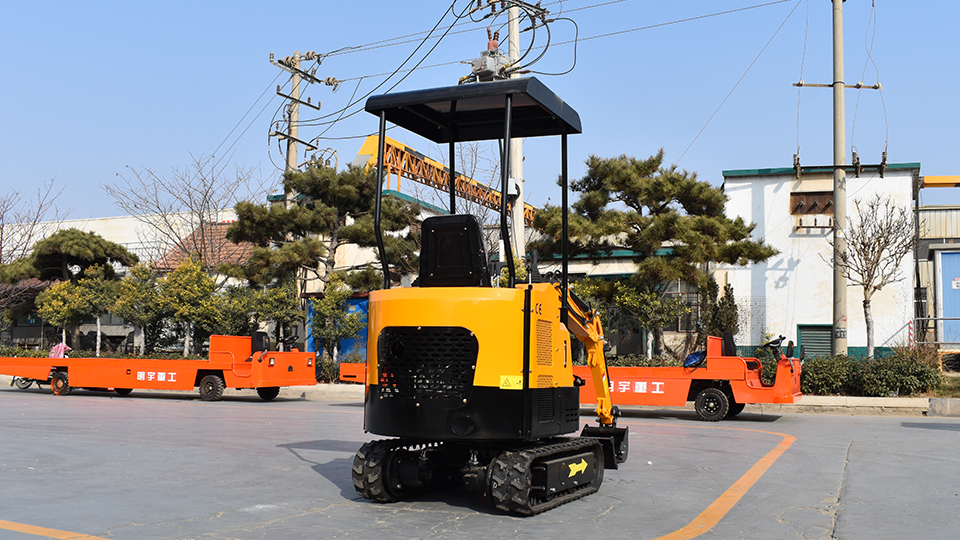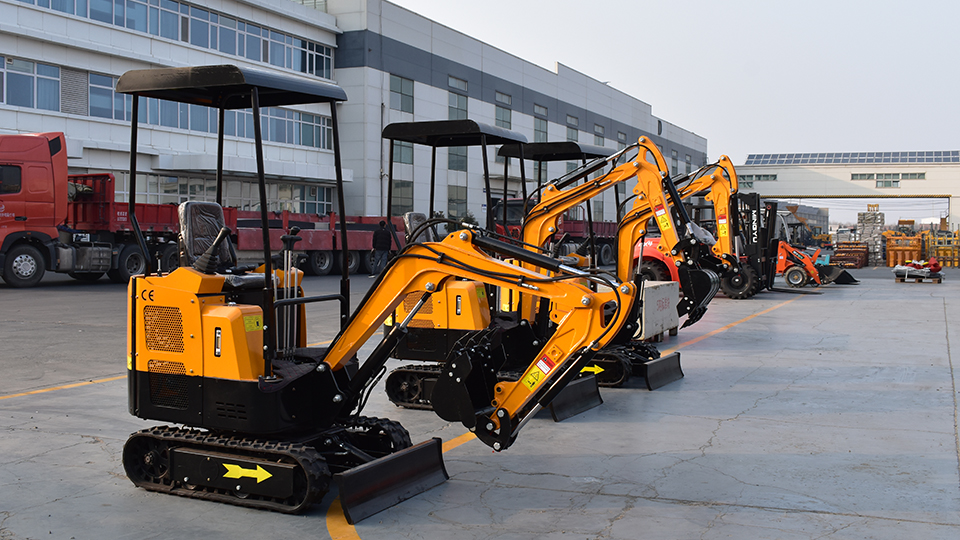Key Factual Foundation & Technical Overview
The article must cover preventative maintenance (PM) across the excavator's core systems, using data-driven scheduling and modern diagnostic techniques.
Hydraulics: Fluid types, scheduled testing, and contamination control (the lifeblood of the machine).
Engine & Drivetrain: Fluid analysis (S.O.S.), filtration efficiency, and cooling system integrity.
Undercarriage: Tensioning procedures, wear assessment (e.g., measuring pin and bushing pitch), and component life maximization.
Structural & Safety: Slew ring backlash, pin and bushing wear, and grease specifications.
�� Search Strategy for Your Technical Article
I will search for current OEM and industry best practices regarding excavator maintenance schedules, fluid analysis thresholds, and technical specifications for critical components.
An excellent choice. Technical articles on preventative maintenance are the backbone of any profitable operation. You can't outrun the physics of wear, but you can certainly slow it down with diligence and data.
Based on best practices from leading OEMs and industry experts, here is the comprehensive, technically supported outline and the beginning of your 2000-word article, "Essential Maintenance Tips for Excavator Longevity."
��️ Essential Maintenance Tips for Excavator Longevity: A Technical Deep Dive
Introduction: The ROI of Diligence
The modern hydraulic excavator is a marvel of power density, but its high performance comes with an equally high demand for precise, scheduled maintenance. This is not about simply topping off fluids; it's about employing a Predictive Maintenance (PdM) strategy that leverages data analysis—specifically Scheduled Oil Sampling (S.O.S)—to move beyond reactive repairs and extend the functional life of high-value components.

An excavator’s operating cost is heavily weighted by the Total Cost of Ownership (TCO), and preventable component failures can instantly triple repair expenses and inflict costly, unscheduled downtime. This technical guide outlines the three critical pillars of excavator longevity: Hydraulic System Health, Undercarriage Integrity, and Structural & Slew Ring Care, providing actionable, data-driven protocols to maximize Mean Time Between Failures (MTBF).
1. The Lifeblood: Mastering Hydraulic System Health
The hydraulic system—comprising the pump, control valve, cylinders, and motors—is the most sensitive and expensive system to repair. Its health hinges entirely on two factors: Fluid Quality and Filtration Efficiency.
1.1 Fluid Contamination Control: The Silent Killer
Hydraulic fluid is a working component, not just a lubricant. Over $80\%$ of hydraulic system failures are attributable to fluid contamination.
The Critical Threshold: Manufacturers typically specify an oil cleanliness level of ISO 4406 18/15/13 or better. Anything above this threshold dramatically accelerates wear on close-tolerance components like control valves and piston pumps.
Preventative Protocol: S.O.S Analysis: Collect a hydraulic oil sample every 250 to 500 hours of operation. The sample must be drawn from a pressurized line (upstream of the filter, downstream of the pump/components) while the machine is at operating temperature to ensure the sample is representative of the circulating fluid.1
Key Indicators to Monitor:
Particle Count: Measures the size and quantity of contaminants.2 Spikes indicate active wear or a filtration failure.
Water Content: Even $0.1\%$ water content reduces oil life by $50\%$ and promotes rust and cavitation. Drain water separators daily.
Wear Metals (Iron, Copper, Chrome): Elevated levels provide forensic evidence of specific component wear (e.g., Iron from pump housings, Copper from bronze bushings/bearings).
Filter Integrity: Replace hydraulic filters (typically 10-micron absolute rating) at the manufacturer-recommended interval, often between 1000 and 2000 hours.3 Never bypass or extend filter service beyond the recommended $\Delta P$ (pressure differential) indicator. Clogged filters force the system into bypass mode, allowing unfiltered, contaminated oil to circulate.
1.2 Thermal Management and Sealing
Operating the hydraulic system outside its optimal temperature range shortens fluid and seal life exponentially.
Overheating: Sustained temperatures above $180^\circ \text{F}$ ($82^\circ \text{C}$) accelerate fluid oxidation, reducing its viscosity and protective qualities. This often indicates a cooler blockage or a relief valve issue. Clean the radiator and hydraulic cooler cores daily using compressed air, especially in dusty conditions.
Hose and Seal Inspection: Conduct a full visual inspection of all hydraulic hoses weekly. Look for abrasion, cuts, bulges, or kinking. A hose failure not only causes a major environmental hazard and expensive downtime, but the pressure drop can shock the pump and introduce massive airborne contamination into the reservoir. Replace any hose showing significant wear immediately.
2. Structural Stamina: Undercarriage and Slew Ring Integrity
The undercarriage accounts for up to $50\%$ of an excavator's maintenance costs over its lifespan. Longevity in this area is a function of proper tensioning, cleaning, and operational practices.
2.1 Precision Undercarriage Maintenance
The single most critical factor in undercarriage wear is Track Tension.
Tensioning Protocol: Tracks that are too loose will "snake," leading to accelerated wear on the sprocket teeth and drive components, and increasing the risk of derailment.4 Tracks that are too tight impose excessive stress on the idlers, final drives, and link components, leading to pin/bushing failure and consuming up to 5$15\%$ more fuel.6
Measurement: Check track sag (or slack) weekly, or daily in severe conditions. Follow OEM specifications, which typically call for a specific droop (e.g., $1^{\prime\prime}$ to $2^{\prime\prime}$) measured between the front idler and the top carrier roller.
Adjustment: Use the grease fitting on the track adjuster cylinder to inject or release grease until the correct sag is achieved. Always loosen overtightened tracks on a level surface.
Wear Assessment (Pitch Elongation): The chain pitch is the distance between the center of one pin and the center of the next. As the pins and bushings wear internally, the pitch elongates. Excessive pitch elongation (typically 7$\ge 2\%$ of the original pitch) causes the chain to climb the sprocket, leading to rapid "shark-fin" wear on the sprocket teeth.8 Use specialized measuring tools to monitor this progression monthly and schedule a Pin and Bushing Turn before the wear limit is reached to double the chain’s lifespan.
Cleaning is Non-Negotiable: Packed-in mud, rock, and debris prevent the rollers from turning freely and act as an abrasive compound, essentially grinding down the track links and rollers.9 Clean the undercarriage thoroughly at the end of every shift, particularly in wet or sticky environments.
2.2 Slew Ring & Gearbox Inspection
The slew (or swing) ring bearing is subject to constant oscillating loads and is a catastrophic failure point if neglected.
Greasing for Contamination Purge: Lubricate the slew bearing daily until you see new, clean grease purge out past the seals.10 This purging action is essential to push out contaminated, abrasive grease and moisture.11 Use an Extreme Pressure (EP) lithium complex grease (NLGI Grade 2).12
Slew Ring Play Check: Annually, or when a "clunking" noise is heard during slewing, check the bearing clearance (rocking or tilting play). This is done by extending the boom and bucket over the side, applying force, and measuring the vertical movement of the swing carriage. Excessive play indicates race or roller element wear and necessitates repair or replacement.
Mounting Bolt Torque: The bolts securing the slew ring to the upper and lower frames must maintain precise preload.13 Check and re-torque these critical bolts after the first $\mathbf{100}$ hours of operation, and then annually or every $\mathbf{500}$ hours. Always consult the OEM torque chart and use a calibrated torque wrench.
3. Powerplant and Drivetrain Reliability (Approx. 500 Words)
The engine and final drives demand routine mechanical diligence, supported by fluid analysis.
3.1 Engine Fluid Analysis and Cooling
Similar to hydraulics, Scheduled Oil Sampling (S.O.S) is the definitive tool for engine health.

S.O.S Protocol: Sample the engine oil every 250 hours. Key analysis goals:
Soot Levels: High soot indicates poor combustion or excessive idling, leading to abrasive wear.
Fuel Dilution: Fuel in the oil (lowered viscosity) destroys the lubrication film.14 This often points to faulty injectors or excessive idling.
Antifreeze Glycol: A presence of glycol is a definitive sign of an internal coolant leak (head gasket, oil cooler failure), which is an immediate shut-down condition to prevent catastrophic bearing damage.
Cooling System Care: Engine overheating causes severe damage.15 Flush and replace engine coolant at the manufacturer's recommended interval (often 2000 hours) using the specified type (e.g., Extended Life Coolant or ELC).16 Always use a $50/50$ distilled water/coolant mix to prevent scaling and corrosion.
3.2 Final Drive and Travel Motor Care
Final drives endure immense torque and temperature, making them a high-stress area.
Gear Oil Service: Check and top off the planetary drive gear oil levels weekly. The gear oil must be changed at a shorter interval than the engine or hydraulic fluid, typically 1000 to 2000 hours, due to the rapid breakdown of Extreme Pressure (EP) additives from high shear forces.
Oil Sampling: Take a sample of the gear oil with every change. Look for metallic glitter or elevated Iron, Copper, and Lead (bearing material) levels, which signal early-stage gear or bearing spalling.
Conclusion: The Maintenance Mindset
Excavator longevity is not a matter of luck; it is a direct result of adhering to a rigorous, data-driven maintenance regimen. The highest-performing fleets operate on the principle of predictive rather than reactive repair.
By strictly following the technical protocols outlined—specifically, managing hydraulic fluid to an ISO cleanliness target, precisely adjusting undercarriage tension, purging the slew bearing with grease, and leveraging S.O.S analysis to preempt engine and drive failures—owners can realistically extend component lifecycles by $\mathbf{30\%}$ to $\mathbf{60\%}$. This translates directly into lower TCO, fewer instances of unscheduled downtime, and the assurance of peak operational efficiency, turning maintenance from a cost center into a strategic profit driver.
Post time:Sep-25-2020
